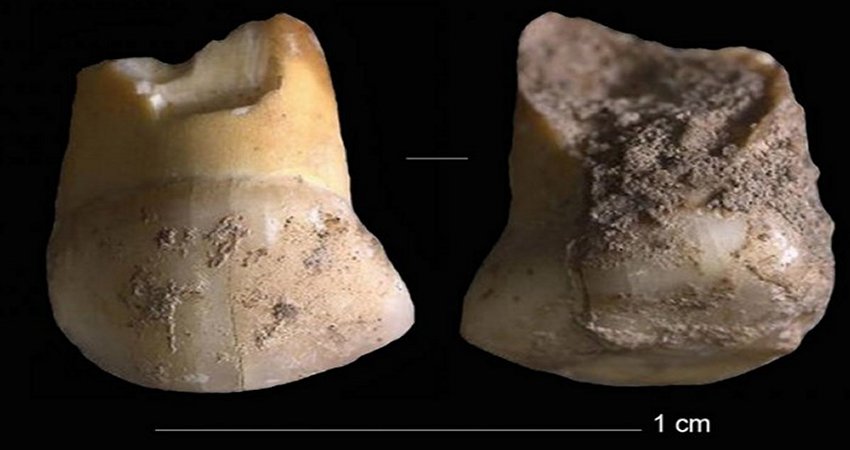Has A Herculaneum Scroll Solved The Mystery Of Plato’s Death?
Jan Bartek – MessageToEagle.com – Plato, widely regarded as one of the greatest philosophers of all time, has left an indelible mark on the modern world with his profound works. Born in 429 BC in ancient Greece, Plato was the most illustrious student of Socrates, and his writings date back to the middle of the fourth century BC.
After the death of his mentor, Socrates, Plato briefly remained in Athens before seeking refuge with one of Socrates’ disciples, Euclid, in Megara. This move was prompted by the persecution faced by Socrates’ followers in Athens. For the next 12 years, Plato traveled extensively, visiting Africa, Italy, Egypt, and other parts of Greece.
Left: Plato and Socrates painting by Rafael (1509). Credit: Public Domain – Right: Charred papyri. Image source – Image compilation by Ancient Pages
During his journey, Plato accompanied the renowned Athenian tragedian Euripides to Egypt, where he interacted with “the priests and prophets.” This exposure allowed him to gain insights into “the methods of divination,” further enriching his philosophical pursuits.
Plato introduced the groundbreaking “theory of forms” and established the first academic institution in history. His philosophical contributions laid the foundation for the earliest systematic concept of the mind-body duality. Despite his profound impact on Western thought, little is known about the details of Plato’s life, including the circumstances surrounding his death or the location of his final resting place.
Recent groundbreaking research on papyri from Herculaneum by The Greek Philosophical Schools-project in Italy has shed new light on long-standing questions. The carbonized papyrus scrolls, discovered in the 18th century in a Roman villa near Herculaneum, known as the Villa dei Papyri, contain a wealth of knowledge yet to be fully explored.
The library’s owner was interested in Greek philosophy, particularly the teachings of Epicurus, and had amassed a substantial collection of papyrus scrolls. However, reading the 1,800 scrolls has proven to be a formidable challenge. While their carbonization during the eruption of Mount Vesuvius in AD 79 preserved the scrolls, they are extremely fragile and difficult to unroll.
Among these scrolls is a book by the Epicurean philosopher Philodemus of Gadara (1st century BC) titled “Arrangement of the Philosophers,” which provides insights into the history of Greek philosophy. This discovery offers a unique opportunity to delve deeper into ancient Greece’s philosophical traditions.
As reported earlier by Ancient Pages, the carbonized Herculaneum papyrus has yielded a remarkable discovery, with over 1000 words constituting 30% of the text that emerged from this ancient and historical document.
Parts of the deciphered text concern Plato’s death and the location of his tomb.
The new edition of the papyrus may shed light on Plato’s burial location. Previous sources indicated that Plato was buried within the grounds of the Academy, a semi-public park-like area outside the ancient city walls of Athens, where he had established his school. The papyrus reveals that Plato “was buried in the garden near the mouseion.” This garden was a more secluded section of the Academy, while the mouseion refers to a shrine dedicated to the Muses, the goddesses of music and harmony, which Plato himself had erected.
mage source
However, we must remember that the text’s editor, Italian classicist Kilian Fleischer, acknowledges from an academic standpoint that his interpretation of the crucial Greek word etaphê (“was buried”) is not definitive or absolute.
Plato’s philosophy places significant emphasis on the role of music, making a location near the mouseion, a place dedicated to the Muses, highly appropriate. In his seminal work, The Republic, Plato underscores the importance of incorporating music into the education of the youth. This reverence for the Muses sheds light on Philodemus’s account of Plato’s death, a narrative that has become more legible thanks to the improved deciphering of the papyrus fragments. The connection between Plato’s philosophical inclinations and the location’s association with the Muses provides valuable context for understanding the historical and intellectual significance of this site.
According to the ancient philosopher Philodemus, he developed a fever towards the end of Plato’s life and fell into a delirious state. During this time, a Thracian girl was playing the flute, possibly to provide comfort, but when she got the rhythm wrong, Plato appeared to regain consciousness momentarily and complained that the girl, due to her non-Greek background, which he referred to as “barbaric,” was unable to get the rhythm correct. This brief revival led Plato’s companion to believe his condition was not as critical as initially thought. However, despite this temporary lucidity, Plato died shortly after this incident.
There are multiple accounts regarding Plato’s death. According to Diogenes Laertius, the author of the historical work “Lives of Eminent Philosophers” written in the 3rd century AD, Plato’s demise occurred either during a wedding celebration or, alternatively, due to an infestation of lice. This contrasts with other narratives surrounding the renowned philosopher’s passing, highlighting the varying perspectives and details recorded by different historical sources.
Evaluating the credibility of Philodemus’s account regarding Plato’s death requires critically examining the available evidence. Ancient philosophical narratives often aimed to portray the philosopher’s demise as a reflection of their life and teachings. In cases where historical records were scarce, there was a tendency to construct idealized deathbed scenes aligned with the desired portrayal.
Marble bust of Plato. Roman copy after a Greek original from the last quarter of the 4th century. Credit: Marie-Lan Nguyen – Public Domain
In this context, the newly discovered story depicting Plato as a discerning judge of music, even in his feverish state, raises suspicions. This anecdote may reveal more about how the Academy wished to memorialize its founder as a devoted servant of the Muses than the circumstances surrounding his death.
The lack of corroborating sources from the time casts doubt on Philodemus’s account’s veracity. While the story itself is intriguing, it is essential to approach it with a critical eye, recognizing the potential for embellishment or fabrication to align with the philosophical ideals and legacy associated with Plato.
It would seem the mystery of Plato’s death is not yet solved, but we may have some new clues.
Written by Jan Bartek – MessageToEagle.com – AncientPages.com Staff Writer













